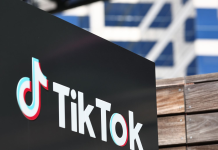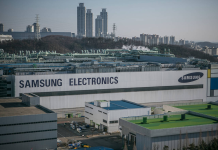STOCKHOLM/MADRID – 2021 could be a do-or-die year for Europe’s efforts to catch up with China and the United States in rolling out super-fast fifth-generation (5G) telecoms networks.
The mission to introduce the technology, which ultimately promises internet speeds up to 20 times faster than today, could be crucial to how competitively the continent emerges from the economic ruins of the COVID-19 pandemic.
Mindful of this, the European Union is funnelling a fifth of its 750-billion-euro ($914 billion) recovery fund to improve countries’ digital capabilities.
European mobile operators have long been reluctant to start investing in 5G networks, which could support smart factories and self-driving cars, because of a lack of political clarity about whether they must accede to U.S. demands to exclude leading equipment supplier Huawei and other Chinese vendors.
But encouraged by the EU financial commitment to the technology in this area, at a time when the U.S. administration is changing, and fearful of falling further behind globally, the industry is preparing to plough ahead in 2021.
“Europe is, unfortunately, behind,” Pekka Lundmark, chief executive of Finnish network equipment maker Nokia, told Reuters. But the rollout “is accelerating already and in 2021 I think it will gather more speed in most countries”.
Swedish equipment maker Ericsson forecasts Europe’s 5G coverage should grow from around 1% of mobile subscriptions across the continent in 2020, to 55% in western countries and 27% in central and eastern states over the next five years, underpinning a longed-for economic recovery.
Yet it is the mobile operators who must pay companies like Ericsson, Nokia and Huawei billions of dollars for the 5G equipment.
The EU agreed its rescue package in July, and companies started drawing up digital plans.
“We spent the whole summer since the announcement working to set out tangible projects,” said Jose Maria Alvarez-Pallete, CEO of Spanish operator Telefonica.
A European Commission spokeswoman said the first payments could be made in the summer of 2021.
Among various digital projects, Telefonica calculates the funds could help cover all of Spain with fast fibre-optic Internet and extend standalone 5G – capable of giving the highest performance – to around 85% of the country by 2025. US cyber agency says SolarWinds hackers are ‘impacting’ state, local governments
GEOPOLITICAL GRAPPLE
While an individual consumer can use 5G for making calls and browsing the internet, the technology’s main benefit lies in creating new businesses, automating factories and running critical infrastructures like power grids.
Global 5G mobile subscriptions are expected to reach 220 million by the end of this year, with China accounting for almost 80% of the total, Ericsson said in a report last month. North America is expected to have 4%.
“As with 4G, first movers advantage is huge and countries rolling out 5G early will see most of the innovation,” an Ericsson spokeswoman said.
“Unless Europe moves quickly, it risks lost growth and weakening industrial competitiveness in manufacturing and logistics that could cost billions of euros in new wealth.”
Geopolitics remains a major risk, however.
Pressure from the United States on its allies to shun Huawei’s equipment from its networks is unlikely to disappear. The United States accuses Huawei of facilitating Chinese spying, allegations denied by the company and Beijing.
U.S. President-elect Joe Biden, however, may be more open than his predecessor to engaging in talks, reducing operators’ worries that sudden policy changes could mean ripping out billions of dollars worth of existing 4G equipment.
Telecom operators had been planning to use their existing 4G infrastructure as the cheapest and fastest way to start the upgrade to 5G, which will be able to transmit data as much as 20 times faster than current networks.
But nearly half of this existing hardware was made Huawei, forcing operators to look elsewhere for suppliers.
Nokia and Ericsson have profited handsomely from this shift, winning deals from former Huawei customers, some of whom are discussing contracts with Samsung, a new entrant to the European market.
Huawei acknowledged the quandary facing clients who have had to navigate the U.S.-China dispute.
“You can’t make seven to 10-year investment decisions unless you know that those investments are protected for that period,” said Kenneth Fredriksen, Huawei’s executive vice president, Central East Europe and Nordic Region.
ANYONE GOT SIGNAL?
The delay in auctioning of 5G spectrum – airwaves necessary for operators to start offering commercial 5G – has been one of the main obstacles to a rollout. Operators were disappointed this year when planned auctions fell by the wayside as governments focused on battling the pandemic.
Swedish operator Telia’s technology chief Stefan Javerbring told Reuters the delay in spectrum allocation had been “the major stumbling block” in the Nordic nations and further afield.
In encouraging news, Germany, Europe’s biggest economy, says it will present draft rules for auctions in January, and Spain plans to put spectrum on the block before the end of February.
Several countries are also making progress with legislation to enact the European Union’s so-called 5G toolbox, a series of recommendations aimed at cutting costs and red tape, giving access to 5G radio spectrum and smoothing cross-border coordination for radio spectrum for 5G services.
“We are already behind in deployment of public 5G networks, that is a fact,” Telia’s Javerbring added. “Now we must do whatever we can to catch up.”











